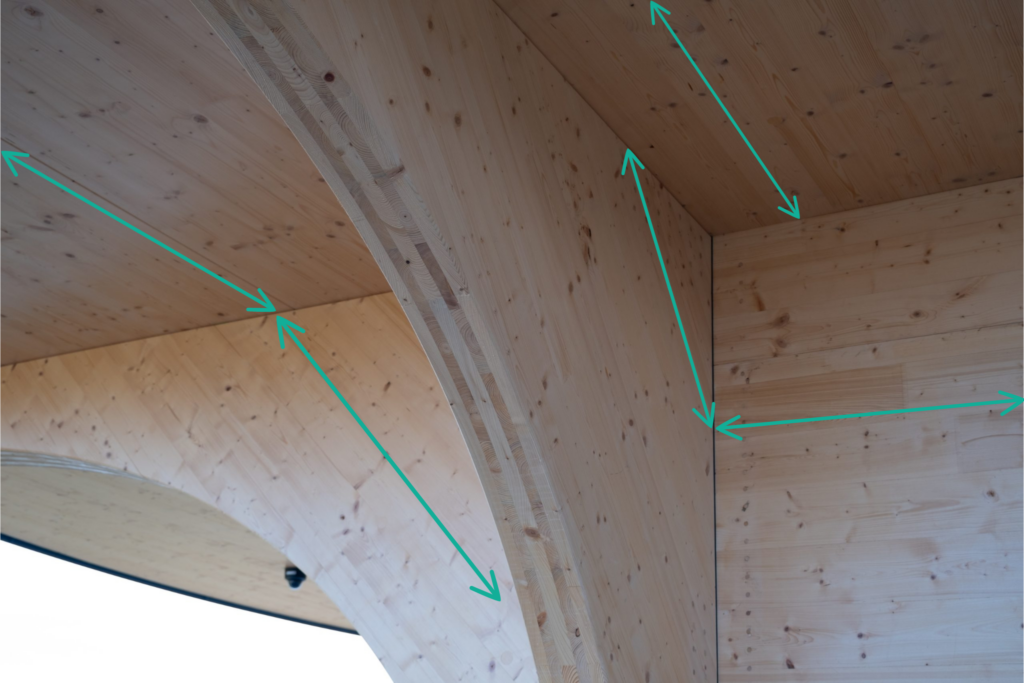Grain direction refers to the alignment of the wood fibers, which is visually noticeable in timber. In timber engineering, it plays a critical role in determining the material’s mechanical properties. The strength, stiffness, and resistance of timber vary significantly depending on the relationship between the applied force and the grain direction.
When forces are applied parallel to the grain, timber typically exhibits higher tensile and compressive strength. However, forces applied perpendicular to the grain can result in reduced strength and increased susceptibility to failure. This orthotropic behavior must be considered during the design and structural analysis of timber components and especially connections to ensure optimal performance and safety.
Understanding it is crucial for activities like cutting, joining, and fastening.

We greatly focused on it while engineering the Better Energy Charging Station.
The CLT and GLT grain directions and unique textures were carefully placed to ensure they matched when touching. This way we made sure that each piece of timber meets structural requirements and enhances the overall aesthetic.
